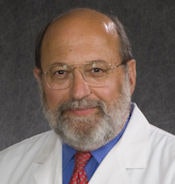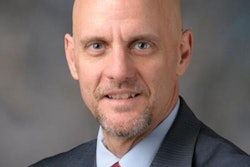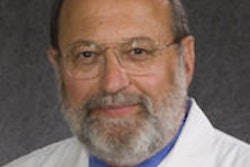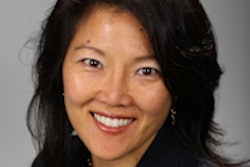
It is discouraging when someone writes as if he or she is an expert, but the material soon reveals a lack of fundamental information. The May 6 article on Medscape about mammography screening by cardiologist Dr. Eric Topol is such a review.
In a column titled "Topol: Time to End Routine Mammography," Topol calls for the cessation of screening mammography as it is currently practiced worldwide. To support his argument, he makes numerous statements on breast screening that are misguided and in many cases simply not true.
Let me start with some facts:
- The randomized, controlled trials of breast cancer screening proved that early detection reduces deaths for women ages 40 to 74.1,2
- Numerous observational studies have shown that when screening is introduced into general populations, the death rate from breast cancer goes down. In countries where modern therapies are available, the largest decline in deaths is among women who participate in screening.3,4
- Screening began in the U.S. in the mid-1980s, and for the first time in 50 years the death rate from breast cancer began to decline in 1990. As more and more women have participated in screening, the death rate has continued to decline. There are now 35% fewer women dying of breast cancer each year than there would be if screening had not been introduced.
- In the major Harvard teaching hospitals, more than 70% of the women who died from breast cancer were among the 20% of women who were not participating in screening5 despite access to modern therapies.
- The Cancer Intervention and Surveillance Modeling Network (CISNET) models used by the U.S. Preventive Services Task Force (USPSTF) all show that the most lives are saved by annual mammography beginning at the age of 40.6
 Dr. Daniel Kopans from Massachusetts General Hospital.
Dr. Daniel Kopans from Massachusetts General Hospital.In 1990, the breast cancer death rate for men went up despite access to modern therapies. It later came back down to 1990 levels but has stayed there while the death rate for women has continued to decline. Men are not screened.
Topol's first paragraph sets up the false expectation that mammography screening is being promoted by "entrenched medical practice" because "all of the data now available point to significant net harm -- far more risk than benefit for routine mammography."
Despite the fact that he is simply incorrect, how does one actually calculate the "net harm"? How many callbacks from screening are equal to allowing one woman to die unnecessarily? Topol needs to provide his scales and calculator so that we can understand his weighting system.
He then expands his lack of knowledge by citing the "Swiss Medical Board" and its advice to "abolish all mammography" as if they are authoritative. Does Topol even know what the "Swiss Medical Board" is?
It certainly has a catchy name, but that is only because the self-appointed group chose that name to make it sound as if it had governmental legitimacy. Its so-called review was never published in a peer-reviewed journal, and it has no standing in Switzerland.
It is the unethical publication practice at the New England Journal of Medicine (which will not publish any papers in support of screening) that gave this group undeserved credibility with the paper that Topol referenced.
Had Topol actually read the paper, he would have noted that the authors actually admit that the "Swiss Medical Board is nongovernmental, and its recommendations are not legally binding. Therefore, it is unclear whether the report will have any effect on the policies in our country."
Yet Topol presented its advice as if it had some importance in Switzerland. In fact, the report has been ignored in Switzerland. Topol needs to read and reference more carefully.
Biennial screening
Topol addresses the debate over annual versus biennial screening in his second paragraph, and he further exhibits a lack of fundamental knowledge when he writes: "There has never been a large study of mammography done every two years."
Actually, this too is false. A number of the randomized, controlled trials screened women every two years. The Swedish Two-County Trial used this interval among women ages 40 to 49. Most European screening programs screen biennially.
Topol writes: "But there are abundant data for annual screening and they are not at all supportive of continuing this practice."
This is also pretty much incorrect. What he really should have said was that there has never been a randomized, controlled trial of annual screening compared to longer intervals.
There are ample data that show that the likelihood of the spread of metastatic disease increases with the size of the cancer, and in case Topol is not aware, it is the metastatic lesions that kill women.
If women are screened annually, the size of the cancers and the stage at which they are found is lower than if cancers are given longer time to grow. This is simply fundamental tumor biology.
If we want to allow cancers more time to grow and spread, then going to a longer interval (every two years) is no problem. Even USPSTF admits that screening every two years will mean women will die whose lives could be saved by screening annually. As noted earlier, the CISNET models all show that the most lives are saved by annual screening starting at the age of 40.
Topol's estimates of the number of women needed to screen to save one life are simply grossly inflated. They are not based on the scientific evidence. I would direct him to actual numbers7 and a more complete review that shows that the number needed to screen is far lower than he suggests.8
Using absolute numbers is designed to make the benefit of breast screening seem very small. The fact that only one to five women per 1,000 develop breast cancer each year does not reduce the devastating fact that more than 200,000 new cases are diagnosed each year.
It is likely that had we not been screening, the number of breast cancer deaths would be 60,000 a year instead of 40,000. If you look at absolute numbers of lives saved each year by requiring seatbelts, it hardly seems worth it: 30,000 Americans need to have and wear seatbelts to save one life.
As with others who wish to limit access to screening, Topol refers to "false positives" that "lead to unnecessary biopsy procedures." In fact, the "false positives" are predominantly recalls from screening.
I would guess that most women would agree that this "harm" is not the same as dying from breast cancer. The recall rate from screening is approximately 10%, which is the same as for cervical cancer (Pap) screening. Most of these are resolved by a few extra pictures or an ultrasound.
Only approximately 2% of screened women undergo an image-guided needle biopsy under local anesthesia, and 20% to 40% of those biopsies reveal breast cancer, which is a high yield. It is certainly far better than in the preimaging era when surgeons excised "lumps" that they could feel and only 15% were cancer,9 and the cancers were larger, at a later stage, and less likely to be cured. Topol would seem to want to return to the "good old days."
Mammography screening is not the reason that pathologists do not agree on the interpretation of biopsy specimens. This has been a fundamental problem for more than half a century. Disagreement is true in every observational endeavor. It is true for pathological analysis in all organs.
Topol writes: "Nevertheless, these women often undergo surgery and receive chemotherapy or radiation (or a combination of all of these treatments), even though there is little to no impact on prognosis."
Actually, this is gratuitous. He has no data to support this statement.
"A Harvard study published in the current issue of Health Affairs demonstrated that the cost of these false-positive studies and overdiagnosis was approximately $4 billion per year."
He neglected to point out that this study was harshly criticized for its poor methodology and the fact that it claimed to evaluate "cost-effectiveness" but left out the "effectiveness" part.
Allowing 10,000 women to die each year (a very conservative number of lives saved due to screening) costs between $5 billion and $16.5 billion, which is the cost of treatment in the last year of life and the cost of lost productivity. It is disappointing when Topol provides only half of the equation, even if the calculation is faulty to begin with.
Topol writes: "Until now, the use of mass screening suggests that we are unable to differentiate the risk in any given individual."
Despite the cynical implications, we are still unable to predict who will develop breast cancer and who will not -- even now.
Topol writes: "With the tens of millions of low-risk women unnecessarily undergoing screening each year, any test would be vulnerable to a high rate of false positives."
Topol is clearly unaware that those "tens of millions of low-risk women" are the ones who develop 75% of the breast cancers diagnosed each year in the U.S. -- the ones he claims are "unnecessarily undergoing screening each year."
Genetic predisposition (BRCA1 and BRCA2 mutations) accounts for, at most, 10% of the women diagnosed with breast cancer each year. If you add other family histories and risk factors, they account for another 15%. So his approach would be to deny access to screening to the vast majority of women (75%) who develop breast cancer each year, and concentrate only on the other 25%.
In fact, since there are no randomized, controlled trials that stratified by risk, we actually have no idea whether or not screening only high-risk women will save any lives. Who has "dumbed it down?" as Topol states? Does he actually believe that if we knew who would develop breast cancer or who would not develop breast cancer, we would not tailor screening more appropriately?
Topol ends by suggesting that we screen everyone for the BRCA mutations so that we only need to screen those women. Sounds good. Let the other 90% of women who will develop breast cancer go back to the death rate we experienced in the 1950s. Nice solution, Dr. Topol.
References
- Duffy SW, Tabár L, Smith RA. The mammographic screening trials: Commentary on the recent work by Olsen and Gøtzsche. CA Cancer J Clin. 2002;52(2):68-71.
- Hendrick RE, Smith RA, Rutledge JH, Smart CR. Benefit of screening mammography in women ages 40-49: A new meta-analysis of randomized controlled trials. J Natl Cancer Inst Monogr. 1997;22:87-92.
- Duffy SW, Tabár L, Chen HH, et al. The impact of organized mammography service screening on breast carcinoma mortality in seven Swedish counties. Cancer. 2002;95(3):458-469.
- Otto SJ , Fracheboud J, Looman CW, et al. Initiation of population-based mammography screening in Dutch municipalities and effect on breast-cancer mortality: A systematic review. Lancet. 2003;361(9367):411-417.
- Webb ML, Cady B, Michaelson JS, et al. A failure analysis of invasive breast cancer: Most deaths from disease occur in women not regularly screened. Cancer. 2014;120(18):2839-2846.
- Mandelblatt JS, Cronin KA, Bailey S, et al. Effects of mammography screening under different screening schedules: Model estimates of potential benefits and harms. Ann Intern Med. 2009;151(10):738-747.
- Tabár L, Vitak B, Yen MF, Chen HH, Smith RA, Duffy SW. Number needed to screen: Lives saved over 20 years of follow-up in mammographic screening. J Med Screen. 2004;11(3):126-129.
- Smith RA. The value of modern mammography screening in the control of breast cancer: Understanding the underpinnings of the current debates. Cancer Epidemiol Biomarkers Prev. 2014;23(7):1139-1146.
- Spivey GH, Perry BW, Clark VA, Coulson AH, Coulson WF. Predicting the risk of cancer at the time of breast biopsy. Variation in the benign to malignant ratio. Am Surg. 1982;48(7):326-332.
Dr. Kopans is a professor of radiology at Harvard Medical School and a senior radiologist in the department of radiology, breast imaging division, at Massachusetts General Hospital.
The comments and observations expressed herein are those of the author and do not necessarily reflect the opinions of AuntMinnie.com.



















